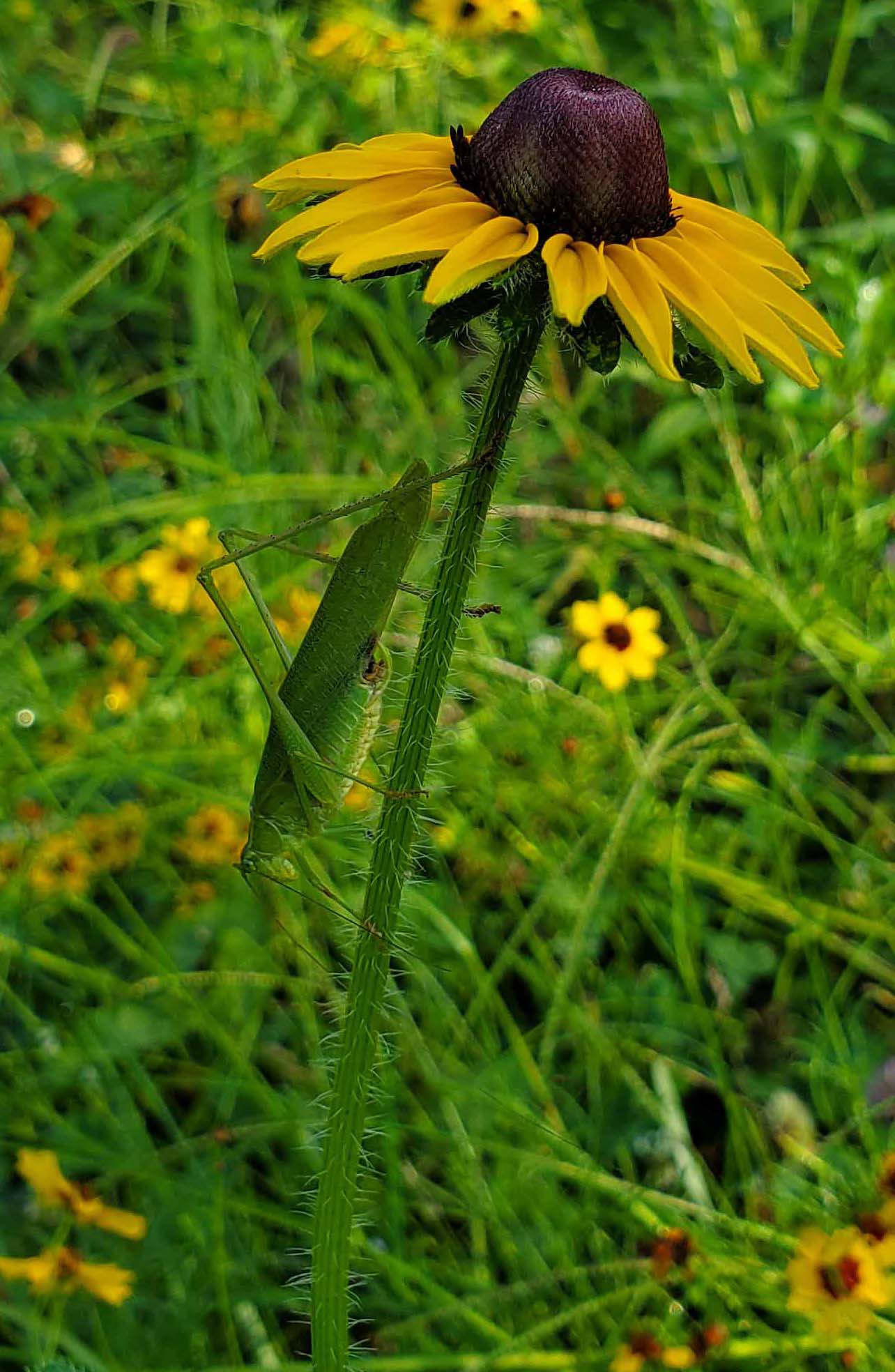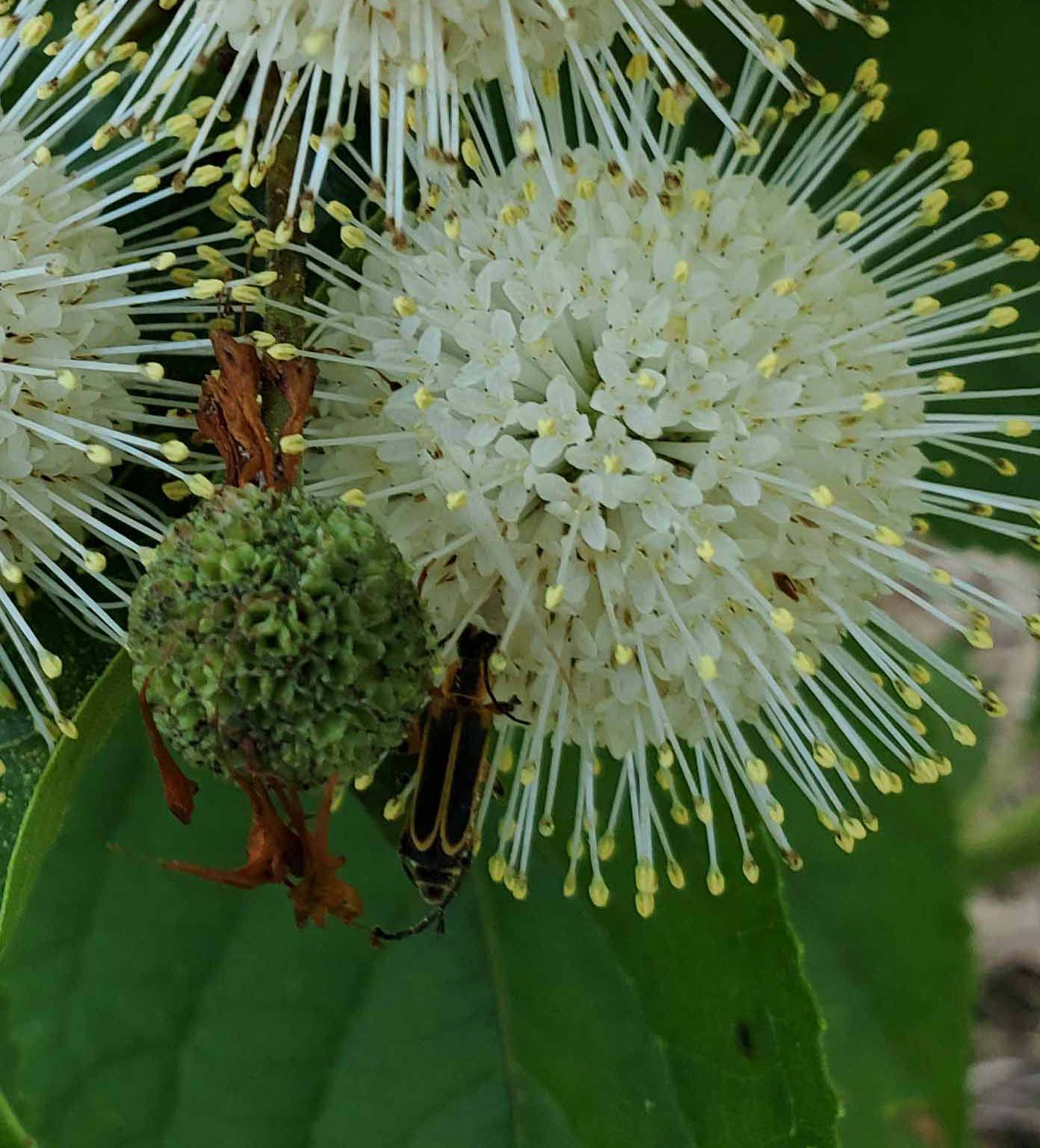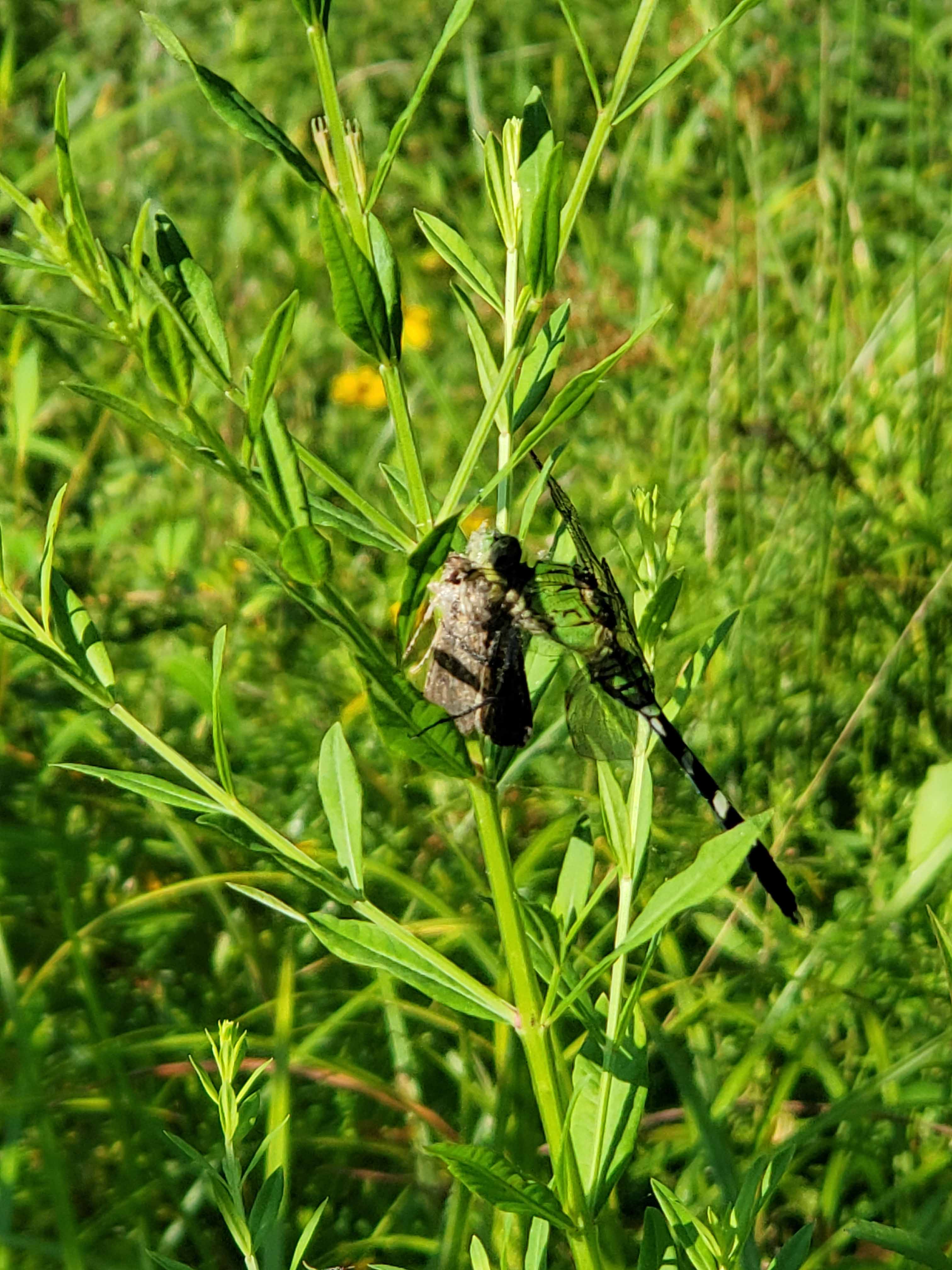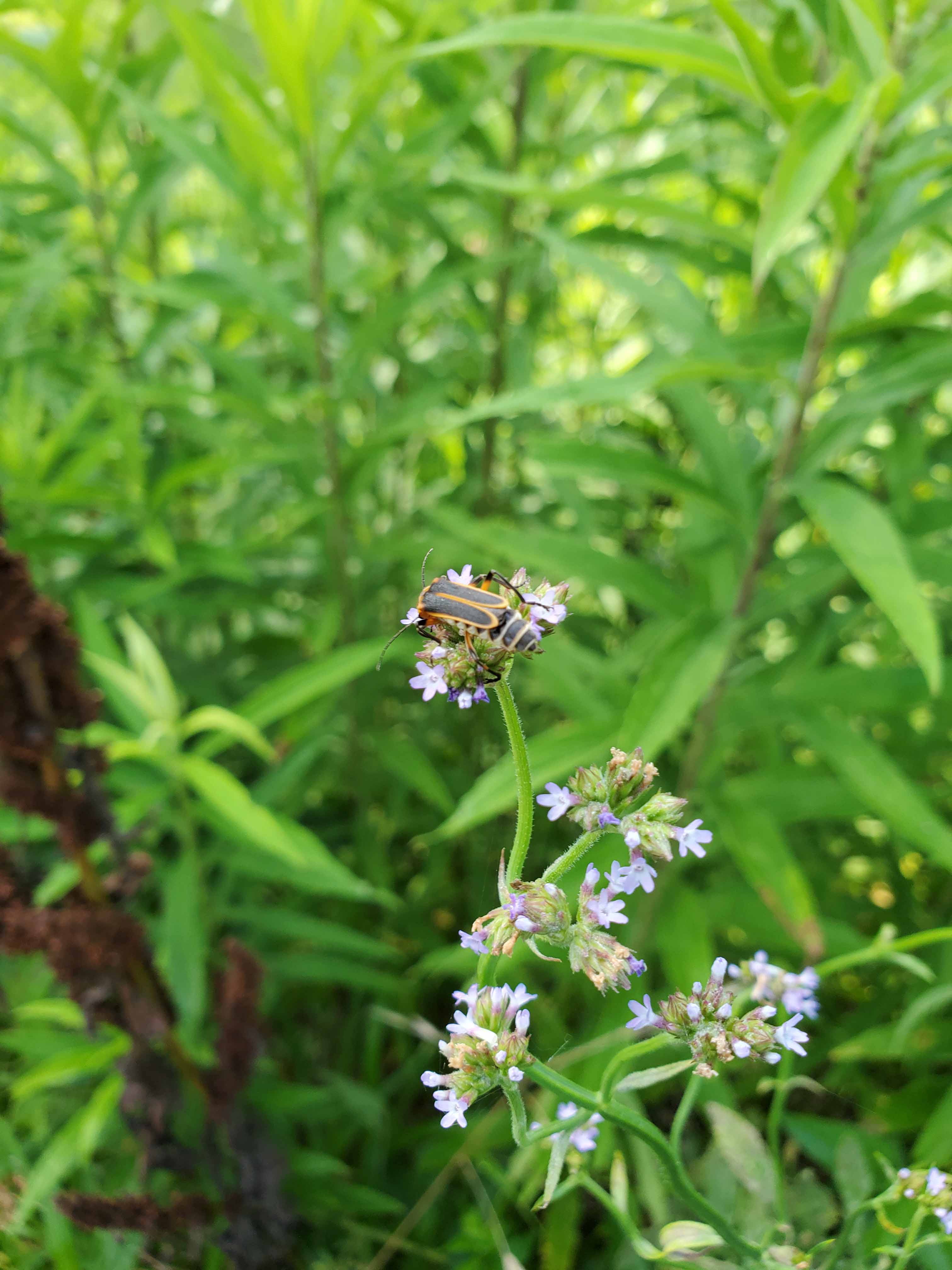Insects
Have you ever thought of the flowers in your yard as the equivalent of McDonalds’ golden arches? Maybe you should. USDA Research Entomologist Dr. Frank Rinkevich says, “flowers are neon signs telling insects to come eat.” If you’ve visited LSU Hilltop Arboretum recently then you know that there are plenty of neon signs flashing as the wildflower meadow bursts with blooms.
 When you visit Hilltop, you are sure to enjoy the colors and scents of the meadow.
An unexpected bonus is the array of life that calls this landscape home. Sit or stand
quietly on the edge of the field and you’ll hear the buzzing of bees busily pollinating
the wildflowers. As you enjoy the stillness, you’ll also catch butterflies floating
on the breeze and grasshoppers resting on the leaves. It’s an insect lover’s dream!
When you visit Hilltop, you are sure to enjoy the colors and scents of the meadow.
An unexpected bonus is the array of life that calls this landscape home. Sit or stand
quietly on the edge of the field and you’ll hear the buzzing of bees busily pollinating
the wildflowers. As you enjoy the stillness, you’ll also catch butterflies floating
on the breeze and grasshoppers resting on the leaves. It’s an insect lover’s dream!
As an insect enthusiast, Dr. Rinkevich, who earned a masters and PhD from Cornell University before relocating to Louisiana, enjoys spending time in landscapes like Hilltop. It’s exciting to walk through the native plants with him as he spots tiny creatures and shares intel on them. Realizing how alive the meadow is makes you appreciate the effort it takes to sustain such a landscape even more.
 Because of the successful efforts to create a diverse, native landscape insects are
flourishing at Hilltop. Rinkevich estimates that there are 300 insects per square
meter in a place like the meadow, with many of them living underground or even inside
of the foliage. On your next visit, look for these creatures among the blooms or in
spots where there is water near plant growth. The native plants, like the Buttonbush
near the pond, are the perfect spot to observe insects as these plants are typically
buzzing with life. If you’re looking for a less active spot, you may note that the
area near the bamboo growth is a little less buggy as these plants do not have the
blooms to attract creatures.
Because of the successful efforts to create a diverse, native landscape insects are
flourishing at Hilltop. Rinkevich estimates that there are 300 insects per square
meter in a place like the meadow, with many of them living underground or even inside
of the foliage. On your next visit, look for these creatures among the blooms or in
spots where there is water near plant growth. The native plants, like the Buttonbush
near the pond, are the perfect spot to observe insects as these plants are typically
buzzing with life. If you’re looking for a less active spot, you may note that the
area near the bamboo growth is a little less buggy as these plants do not have the
blooms to attract creatures.
Whether you’re gardening to produce fruit or flowers or you simply enjoy getting dirty, insects are part of the equation. “If you like plants, you should like insects,” says Rinkevich. “They go hand in hand and they complement each other.” In fact, he says they evolved together with each depending on the other for survival. That symbiosis is on full display at Hilltop when you catch a glimpse of a bee’s pollen basket or when you realize that a flower’s design is intentional to attract the bee and help create the next generation of buds.
Anyone who has had a tomato plant attacked by insects may be thinking, “Why should I care about an insect?” Rinkevich says that these creatures are some of the most important animals on the planet, and while you may be bugged by insects like aphids or mosquitoes, not all insects are a nuisance. “Less than 1/10 of one percent of insects are pests,” he says. The majority of insects have an important role on the planet, and some are even critical to human health. For example, Rinkevich says insects serve as an ideal model to study many human diseases, allowing scientists to learn more about them and research potential treatments or cures.
Given the beneficial nature of insects, it’s important that we learn to live with them and maybe even lend them a helping hand when we can. While it may seem like insects are everywhere you look in Louisiana, Rinkevich says many are actually on the endangered species list. Luckily, there are things home gardeners can do to protect these helpful little creatures.
Tips to Help Our Buggy Friends
Dr. Rinkevich suggests the following tips for creating a beneficial insect garden:
- Leave nature alone and let it do its thing
- Plant wildflowers
- Embrace the weeds
- Plant native plants with tons of flowers
- Promote native plants to others
- Create a diverse habitat
- Plant what insects can use
- Plant low maintenance options
Rinkevich says insecticides shouldn’t always be the first thing we reach for if there’s a problem. After all, if plants and insects evolved together, insects are only doing what they are designed to do when they eat leaves and fruit. Instead, he recommends using soapy water to remove unwanted insects or deploying an organic pyrethrin.
The next time you stop by Hilltop to enjoy the flowers and foliage, take a minute to observe the insects that call the landscape home. The meadow is filled with flapping wings and wagging antennae that make any visit exciting.

Aphids covering the plant stalk.

Dragonfly eating a moth.

Soldier beetle enjoying the flower.